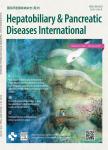Pancreaticoduodenectomy: a comparison of superior approach with classical Whipple's technique
Pancreaticoduodenectomy: a comparison of superior approach with classical Whipple's technique作者机构:Department of Surgical Gastroenterology Sher-i- Kashmir Institute of Medical Sciences
出 版 物:《Hepatobiliary & Pancreatic Diseases International》 (国际肝胆胰疾病杂志(英文版))
年 卷 期:2013年第12卷第2期
页 面:196-203页
核心收录:
学科分类:1002[医学-临床医学] 100210[医学-外科学(含:普外、骨外、泌尿外、胸心外、神外、整形、烧伤、野战外)] 10[医学]
主 题:superior approach technique Whipple's technique pylorus preserving pancreaticoduodenectomy
摘 要:BACKGROUND: Pancreaticoduodenectomy (PD) is the standard procedure for resecting tumors arising from the periampullary area and the pancreatic head. Nevertheless this procedure is inherently difficult and associated with high morbidity and mortality. Besides, the technique applied for exposing the portal and superior mesenteric veins is time-consuming, difficult and associated with the risk of major venous injury. Recently we have introduced a modified approach for making this part of the procedure quick, safe and bloodless, which constitutes the subject of this study. METHODS: Patients who underwent pylorus preserving pancreaticoduodenectomy (PPPD) either by superior approach technique (group 1) or by classical Whipple’s technique (group 2) were retrospectively identified. Age-sex composition, body mass index (BMI), total operative time, operative blood loss, intraoperative blood transfusion requirement, morbidity, mortality and length of hospital stay were compared between the two groups. RESULTS: Between January 1997 and December 2011, 72 patients underwent PPPD by the superior approach technique (group 1) and 38 underwent PPPD by the classical Whipple’s technique (group 2) at our institution. Statistically significant differences were observed in operative time (208.1±46.3 minutes in group 1 vs 322.0±33.8 minutes in group 2), operative blood loss (601.0±250.3 mL in group 1 vs 1371.5±471.8 mL in group 2), and intraoperative blood transfusion requirement [10 (13.9%) patients in group 1 and 24 (63.2%) in group 2]. Among 18 (16.4%) obese patients, significant differences in operativetime, operative blood loss and intraoperative blood transfusion requirement were observed between groups 1 and 2. There was no significant inter-group difference in complication rate among obese patients, but comparing obese patients with normal weight patients revealed higher rates of complications like pancreatic fistula (27.8% vs 6.5%), delayed gastric emptying (16.7% vs 5.4%), and in




